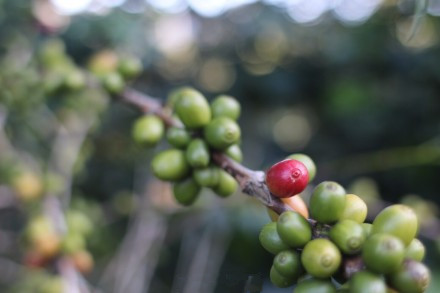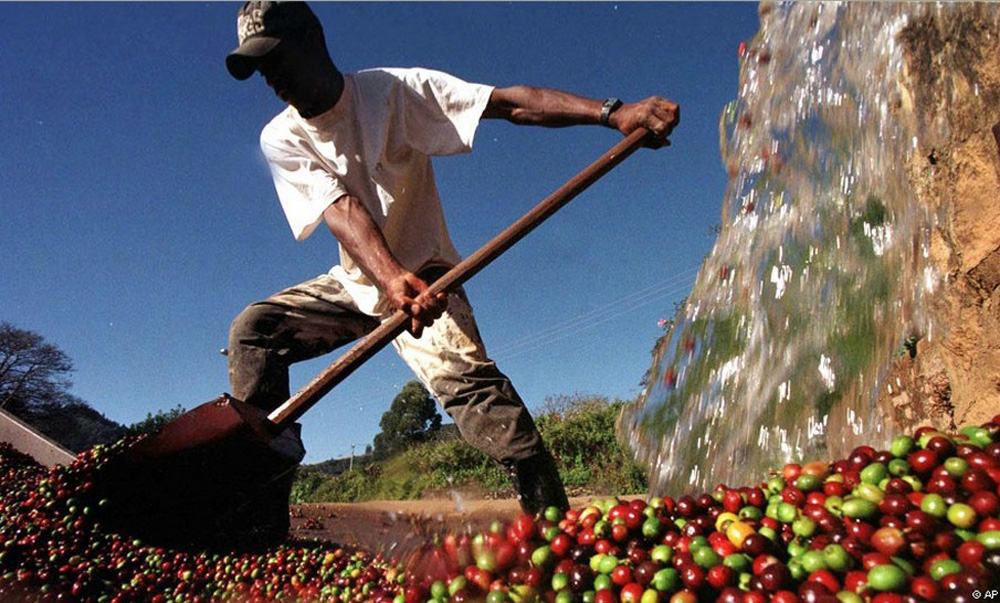Ethiopian coffee the characteristics of Ethiopian coffee
The coffee tree originated in Ethiopia, which was originally a wild plant here. The name "coffee" comes from the Ethiopian town of "Kaffa". Humans may have known how to grow coffee trees as early as the 9th century.

Coffee producing areas in Ethiopia:
Many coffee trees in Ethiopia are still wild plants, and the coffee grown on this coffee tree is full-grained and slightly alcoholic. Today, Ethiopia is an important coffee producer and a major exporter of Arabian coffee beans in Africa. The high-quality coffee here is of excellent quality.
Various forms of coffee cultivation can be found in Ethiopia: everything from wild coffee forests and semi-developed land to traditionally operated plots to modern plantations. About 50% of the coffee is grown more than 1500 meters above sea level.
Harrar)
Coffee is the highest growing area of all coffee in Ethiopia. Hara coffee can be divided into long coffee beans and short coffee beans, of which long coffee beans are the most popular. It has a soft taste, with wild flavor of wine, and slightly sour taste, unforgettable after drinking.
Jima (Djimmah)
Coffee wild is more than 1200 meters above sea level and is sold under two brands: Limu coffee and Babeka coffee. Other coffee names include Sidamo coffee from central China, which is sold under the name Yirgachaffe, and coffee with a unique flavor from Lekempti. The appearance of Jima and Cedamo coffee beans is not pleasant, but the taste is very good.
One of the rarest Ethiopian coffee beans on the market is Ilgachafi, which is exported to Japan and Europe but rarely seen in the United States. This is because Dallmeyer, the German coffee roaster owned by Nestle, has established close ties with the growers of Ilgachafi coffee, thus obtaining the largest single supply of the coffee beans.
The flavor of Ethiopian coffee is difficult to describe. It is neither strong nor sour. Therefore, it is not suitable for deep baking, otherwise it will easily lose its characteristics.
The characteristics of Ethiopian coffee:
Ethiopian coffee is somewhat similar to the famous mocha coffee. Of course, high-quality Ethiopian coffee can be compared with the best coffee from all over the world, including its considerable price.
Ethiopia has the highest domestic consumption of coffee in Africa. In the countryside, it is often drunk with a vanilla called HealthofAdam: the new coffee beans are roasted and mashed with the vanilla, then mixed and drunk in a small teacup, which is often served with pancakes to extract the sweet pepper flavor from the pancakes.
Flavor: very unique, delicate and rich taste, with fruit and wild flavor of the wine.
Suggested baking method: medium baking
★★★: excellent
The market for Ethiopian coffee:
The coffee industry is managed by the Ethiopian Coffee Company (theEthiopianCoffeeMarketingCorporation, or ECMC), which controls 90 per cent of the export market. Ethiopian coffee is sold at daily auctions, mostly exported to Germany, the United States, France and Japan.
Important Notice :
前街咖啡 FrontStreet Coffee has moved to new addredd:
FrontStreet Coffee Address: 315,Donghua East Road,GuangZhou
Tel:020 38364473
- Prev

Colombian Coffee introduces the characteristics of Colombian coffee
Coffee was first introduced to Colombia in 1808 when it was brought by a priest from the French Antilles via Venezuela. Today the country is the second largest producer after Brazil. Colombian coffee origin: Colombian coffee is one of the few original coffee sold in the world under the name of the country. In terms of quality, it can't get any other coffee.
- Next

The characteristics of Jamaican Blue Mountain Coffee
Almost everyone in Jamaica knows that Blue Mountain Coffee is the most expensive coffee in the world. In 1725, Sir SirNicholasLawes brought the first Blue Mountain Coffee species from Martinique to Jamaica and planted them in the St.Andrew area. Coffee producing area of Jamaica: today's St. Andrews is still Blue Mountain Coffee.
Related
- Detailed explanation of Jadeite planting Land in Panamanian Jadeite Manor introduction to the grading system of Jadeite competitive bidding, Red bid, Green bid and Rose Summer
- Story of Coffee planting in Brenka region of Costa Rica Stonehenge Manor anaerobic heavy honey treatment of flavor mouth
- What's on the barrel of Blue Mountain Coffee beans?
- Can American coffee also pull flowers? How to use hot American style to pull out a good-looking pattern?
- Can you make a cold extract with coffee beans? What is the right proportion for cold-extracted coffee formula?
- Indonesian PWN Gold Mandrine Coffee Origin Features Flavor How to Chong? Mandolin coffee is American.
- A brief introduction to the flavor characteristics of Brazilian yellow bourbon coffee beans
- What is the effect of different water quality on the flavor of cold-extracted coffee? What kind of water is best for brewing coffee?
- Why do you think of Rose Summer whenever you mention Panamanian coffee?
- Introduction to the characteristics of authentic blue mountain coffee bean producing areas? What is the CIB Coffee Authority in Jamaica?

